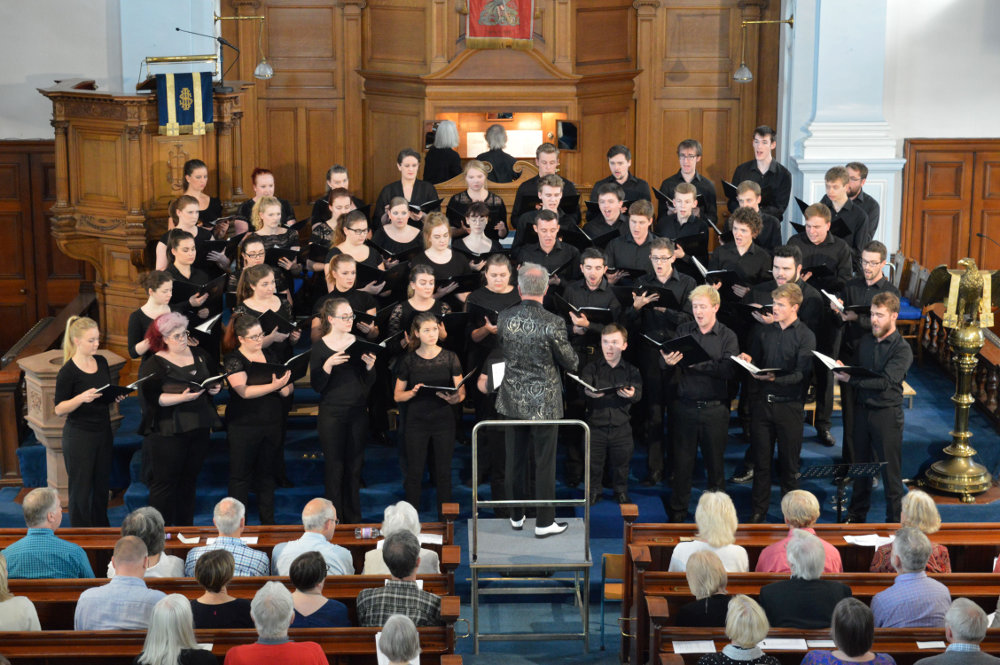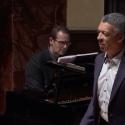It’s just a short trip down the A1 from Edinburgh. But East Lothian – with its big skies, wide-open spaces, empty beaches and seemingly inexhaustable supply of quaint, historic villages – feels like a long, long way from the Scottish capital. Especially from the heaving, hectic Edinburgh of the August festivals season – which East Lothian’s Lammermuir Festival follows by just a couple of weeks, managing to maintain the momentum of artistic endeavour, but also providing a far more reflective, considered antidote.
The East Lothian festival takes its name from the surprisingly wild Lammermuir Hills that hem in its village venues against the Firth of Forth coast, and 2016 was its seventh year – once perhaps one of the UK’s hidden gems of music festivals, it now feels like it’s well outgrown that description, with a bold, ambitious programme that was bigger than ever before, and substantial audiences flocking from throughout Scotland, northern England and much further afield too.
You could hear every one of the Marian Consort’s sextet of voices individually Festival directors James Waters and Hugh Macdonald put the region’s richness of small-scale, interesting venues to very good use. Like, for instance, Lennoxlove House, home to the Dukes of Hamilton, whose magnificent Great Hall dates right back to the 14th century – three centuries earlier, joked the Marian Consort’s director Rory McCleery, than the music they were there to sing in a quietly spectacular morning recital on the festival’s opening weekend.
And that music was some of the glorious Catholic choral works of William Byrd, kept secret in furiously Protestant England in the 16th and 17th centuries. With its barrel-vaulted ceiling and bare stone walls, Lennoxlove’s intimate Great Hall, with a capacity audience crammed into every corner, provided an appropriately evocative, hidden-away setting for their performance – and a fascinating acoustic, too, both intimate and imposing. You could hear every one of the Marian Consort’s sextet of voices individually throughout their recital – the blend was superb, but they didn’t aim for the super-smooth vocal purity of other groups. Instead, it was a carefully maintained balance between corporate gloss and distinctive individuality that made their accounts fresh and alive.
They took care, too, over their vocal doublings in Byrd’s Mass for Four Voices, bringing constantly shifting degrees of richness across their six voices, and they closed with spirited, dancing filigree in his joyful Venite, exultemus Domino. And though there might have been a little too much gore in McCleery’s descriptions of anti-Catholic persecution, his commentaries nevertheless provided an effective contrast to the poised serenity of ensemble’s supple, fluid singing.
 There was more singing the following weekend, from the National Youth Choir of Scotland (pictured above) under founding conductor Christopher Bell, this time in the broader expanse of St Michael’s Church, Inveresk, on the outskirts of Edinburgh itself. With singers aged 16 to 25, driven, committed and eager to share, NYCoS can put many choirs of older singers firmly in the shade – especially in repertoire that they know intimately, which is what they brought to their Lammermuir concert.
There was more singing the following weekend, from the National Youth Choir of Scotland (pictured above) under founding conductor Christopher Bell, this time in the broader expanse of St Michael’s Church, Inveresk, on the outskirts of Edinburgh itself. With singers aged 16 to 25, driven, committed and eager to share, NYCoS can put many choirs of older singers firmly in the shade – especially in repertoire that they know intimately, which is what they brought to their Lammermuir concert.
James MacMillan’s 1990 Cantos Sagrados doesn’t pull any punches in its forthright depictions of murders, disappearances and executions under the Argentinian junta, and the NYCoS singers gave a blistering, white-hot account, from the stuttering shock of the opening movement and its discovery of a body washed up by the river, through to horrifying radiance in the closing scene of a magical, transcendental execution.
They followed it with more vivid picture-painting, although of a far softer kind, in Eric Whitacre’s Leonardo Dreams of his Flying Machine, in a performance so theatrical that it made even MacMillan’s Cantos Sagrados seem restrained. If their concert closer – Vivaldi’s Gloria – felt more everyday, that was more a mark of the angst and wonder that had preceded it, rather than the fine, glowingly detailed performance itself.
 Scottish pianist Steven Osborne (pictured above) is the Lammermuir Festival’s patron, and a regular performer at the event too, and his evening recital amid the homespun Arts and Crafts splendour of Chalmers Memorial Church, Port Seton, was a typically intelligent offering. He devoted the first half to Debussy, with playing that was high on classical elegance and precision, though interestingly low on pastel-hued opulence – from considered storytelling in a tender Children’s Corner through to a controlled sense of fantasy in L’isle joyeuse, each piece crisp, unfussy, vividly characterised and unafraid to sparkle.
Scottish pianist Steven Osborne (pictured above) is the Lammermuir Festival’s patron, and a regular performer at the event too, and his evening recital amid the homespun Arts and Crafts splendour of Chalmers Memorial Church, Port Seton, was a typically intelligent offering. He devoted the first half to Debussy, with playing that was high on classical elegance and precision, though interestingly low on pastel-hued opulence – from considered storytelling in a tender Children’s Corner through to a controlled sense of fantasy in L’isle joyeuse, each piece crisp, unfussy, vividly characterised and unafraid to sparkle.
It set just the right tone for his concert’s second half, when Osborne went back in time to an earlier collection of vivid musical images. He took quite a propulsive ride through Mussorgsky’s Pictures at an Exhibition, seeming to skip nimbly from painting to painting in eager ‘Promenade’ movements, from a violent, shrieking ‘Baba Yaga’ to a wonderfully noble ‘Great Gate of Kiev’ in which he revealed a tonal palette to his piano that we hadn’t heard before – strong, sustained, lit from within.
 For the festival’s closing concert, the Royal Northern Sinfonia had travelled north from Gateshead across the border for a concert in the expansive grandeur of St Mary’s Church, Haddington, under music director Lars Vogt (pictured above). There was plenty to admire in their dance-suffused programme – not least a fizzing Kodály Dances from Galánta, which Vogt rather disconcertingly directed standing in front of his piano, score laid across its music stand, and an exquisitely refined Mozart Piano Concerto No. 27.
For the festival’s closing concert, the Royal Northern Sinfonia had travelled north from Gateshead across the border for a concert in the expansive grandeur of St Mary’s Church, Haddington, under music director Lars Vogt (pictured above). There was plenty to admire in their dance-suffused programme – not least a fizzing Kodály Dances from Galánta, which Vogt rather disconcertingly directed standing in front of his piano, score laid across its music stand, and an exquisitely refined Mozart Piano Concerto No. 27.
But Vogt’s Mozart also seemed quite determined, rather light on wit and effervescence, and his Beethoven Seventh Symphony, though urgent, also felt somewhat lacking in dramatic intention – despite a light-footed slow movement that still managed to unfold majestically. Nevertheless, the concert revealed a fruitful, probing relationship between the orchestra and its music director of just a year – and made for a suitably grand, incisive conclusion to what had been Lammermuir’s biggest, most ambitious and most gratifying festival to date.














Add comment